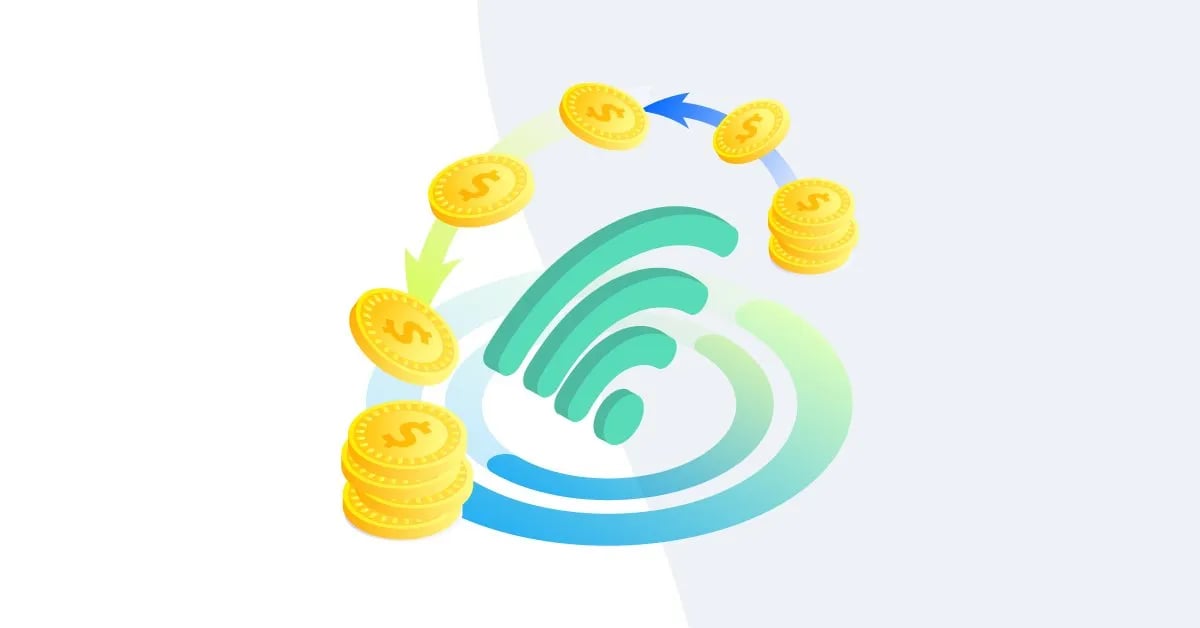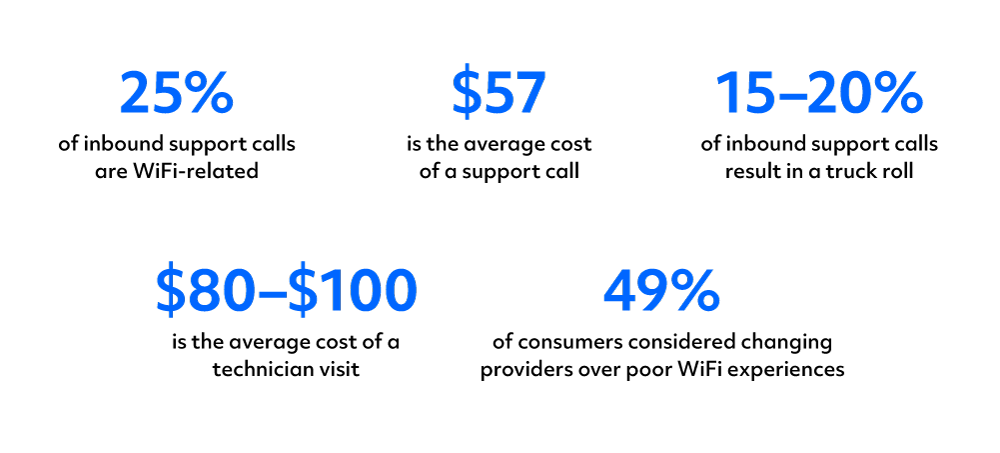3 key components to developing a profitable WiFi support strategy

Subscriber expectations around WiFi are shifting. As more ISPs invest heavily in improving internet access and leveraging fiber broadband, managing the quality of experience (QoE) subscribers receive is becoming a top priority for ISPs.
Today, consumers experience their internet through WiFi; in their mind, WiFi is the internet connection. But what does this shift mean for your business? Here are just a few stats to keep in mind:

This means we’re seeing a higher cost to serve and support your subscribers. But, it’s not all bad news. Subscriber dependence on WiFi opens up significant opportunities for ISPs. When you factor in the true nature of most of these ISP support calls, you find that they’re more often than not about subscriber education, configuration problems, or poor setup or placement of devices. And the solutions often don’t require costly calls or truck rolls.
So the question then becomes: How do you develop a WiFi strategy that doesn’t break the bank, actually reduces operational expenses (OPEX), and can help you turn a profit? In our opinion, there are three key components.
1. Issue prevention
Data shows that 5% of new internet installations end in repeat tech visits and 15% of total ISP churn happens within the first 90 days of installation. In addition, the number one driver is service performance, which is actually made up of mostly WiFi connectivity issues.
With this in mind, it’s clear the installation process needs to be a focus for ISPs. You need to make sure your technicians are setting up not just the network connection but the WiFi network in a way that will prevent the majority of WiFi issues in the future. That will immediately reduce the expense of truck rolls, and, as a bonus, it will help with customer satisfaction scores (CSAT), net promoter scores (NPS), and prevent early-life churn.
2. Contextual self-service
Today, ISPs have chatbots, knowledge bases, and FAQs that do their best to educate subscribers on how to resolve common issues, but they’re not contextualized. They don’t identify the subscriber’s exact issue and tell them how to solve it specifically. So what happens is that the majority of people who try to self-resolve end up calling in anyways, contributing to the 25% of ISP customer service calls that are WiFi-related we mentioned earlier.
To reduce churn and increase overall revenue, you need a self-service tool that is made specifically for WiFi and delivers contextual self-service support. Ultimately, you need to offer an option to subscribers so they can resolve their own WiFi connectivity issues without calling into support, clogging up your call queues, and driving up your costs.
3. Informed or knowledgeable agents
Between high turnover in support centers and the complexity of home networks in general, it’s challenging to guarantee that if a WiFi-related call does come in, the agent that answers it has all the knowledge to both troubleshoot WiFi connectivity issues and identify upsell opportunities. It’s incredibly difficult to hire five people who could all do that well, let alone 20 or a few hundred, depending on your size.
So to get ahead, you need to ensure the tools you equip your agents with can give them this information and walk them through resolutions and upsell conversations in a guided way. This way, regardless of their technical abilities or years of experience, every agent can navigate to a suitable resolution without difficulty. Otherwise, these calls become a frustrating guessing game for agents and subscribers and will result in those repeat calls, unnecessary tech visits, and possible churn.
How RouteThis can help
When RouteThis was founded, we knew that the growing global interest in WiFi would make consumers look to ISPs for support. We also knew that using the solutions provided by individual CPEs could get expensive. So to help ISPs stay competitive, we created a light, software-only, CPE-agnostic solution to help them support WiFi from one central platform.
By pulling WiFi diagnostic data across all devices, networking equipment, and home networks, we turned it into actionable insights that power our three main products:
- RouteThis Certify: An installation app designed to arm technicians with the tools they need to optimize any WiFi network for the best experience from day one.
- RouteThis Self-Help: A self-service app that empowers end-users to resolve home network issues without calling tech support.
- RouteThis Resolve: An agent dashboard that provides support teams with the ability to resolve home network issues quickly and seamlessly.
By using these tools to aid in WiFi support, you can improve the knowledge of your agents, technicians, and subscribers, and ultimately, help your ISP become more profitable.
